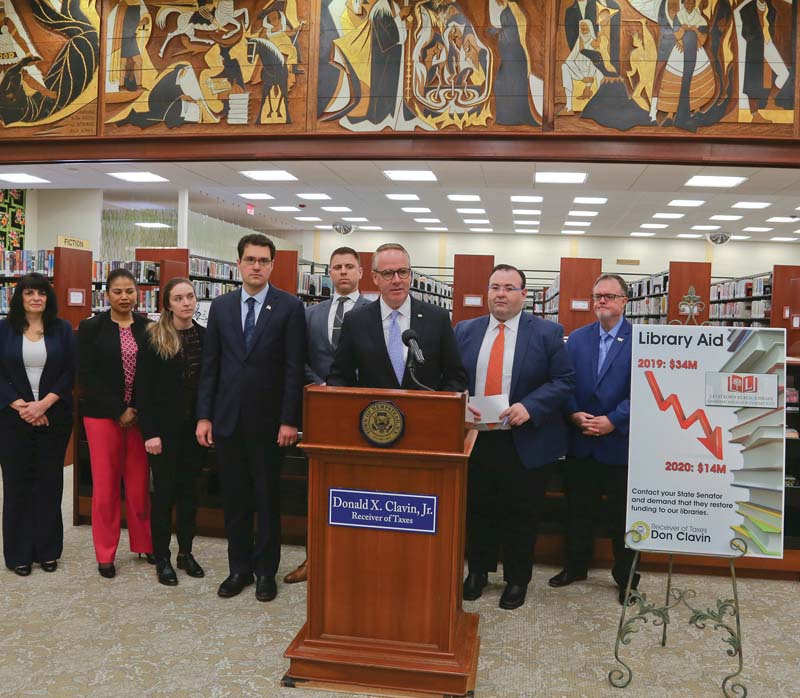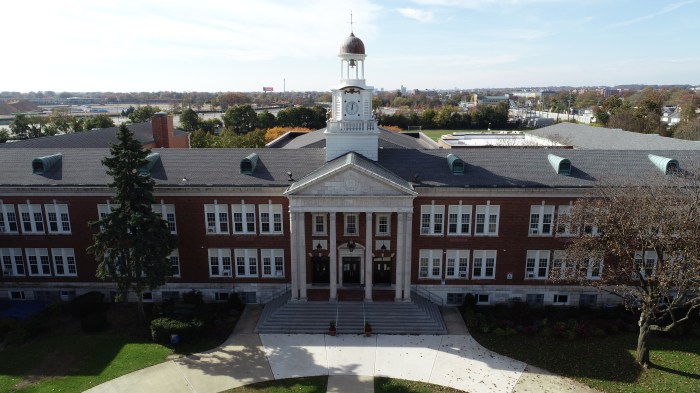
(Photo courtesy of the Town of Hempstead
Receiver of Taxes office)
A week ago, Town of Hempstead Receiver of Taxes Donald X. Clavin headed to Levittown Public Library. He was on a mission to fight against Governor Andrew Cuomo’s recent budget that approved a $20 million cut from libraries across New York State.
“I’m always happy to remind the public of the amazing services that our area libraries provide to residents,” Clavin said. “Our state leaders made a big mistake by leaving a huge gap in funding for our libraries. These are truly gems in our communities, and our state leaders need to recognize the important functions they serve for our residents. I urge residents to contact their state senators to restore this imperative library funding immediately.”
This year, the state budget included $34 million for public libraries in construction aid, which is meant to improve critical infrastructure improvements at the state’s different centers of reading. But for the newly-approved 2020 budget, there is only $14 million allocated for the same library construction aid. Nassau County libraries will combine to receive about $800,000 next year, down from 2019’s $2 million.
“This is the biggest punch in the gut to libraries on Long Island since the state passed the MTA payroll tax,” Steven Dalton, president of the Levittown Public Library Board of Trustees said. “It took a change in leadership in Albany to correct that error, and it might be new leadership that’s needed again to reverse these draconian cuts. Libraries are centers of education and should be adequately funded.”
Library officials made note of the original reason why the program began in the first place. It was initially designed to be a 50 percent to 50 percent ratio of state and local funding, and in communities that are considered economically disadvantaged, the funding ratio was to be 75 percent state funds to 25 percent local funds.
“Many children get their first introduction to socialization and the joys of reading at libraries,” Clavin said. “Libraries provide taxpayers with educational programs, art exhibits and services. And we cannot forget that libraries provide children, especially those in economically disadvantaged communities, with access to technology and other after-school resources.”































